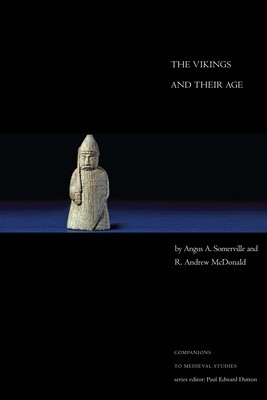
- We will send in 10–14 business days.
- Author: Angus A Somerville
- Publisher: University of Toronto Press
- ISBN-10: 1442605227
- ISBN-13: 9781442605220
- Format: 15 x 22.6 x 1.3 cm, softcover
- Language: English
- SAVE -10% with code: EXTRA
Reviews
Description
This book, the first in our Companions to Medieval Studies series, is a brief introduction to the history, culture, and religion of the Viking Age and provides an essential foundation for study of the period.
The companion begins by defining the Viking Age and explores topics such as Viking society and religion. Viking biographies provide students with information on important figures in Viking lore such as Harald Bluetooth, Eirik the Red, Leif Eiriksson, and Gudrid Thorbjarnardaughter, a female Viking traveler. A compelling chapter entitled "How Do We Know About the Vikings?" and a case study on the wandering monks of St. Philibert introduce students to the process of historical inquiry. The book concludes with a discussion of the impact of the Vikings and their legacy.
Pedagogical resources include a detailed chronology, study questions, a glossary, 4 maps, and 14 images. Text boxes provide information on outsider perceptions of the Vikings, a detailed account of a Viking raid, and a description of a chieftain's dwelling in Arctic Norway. This study also benefits from a multi-disciplinary approach including insights and evidence from such diverse disciplines as archaeology, philology, religion, linguistics, and genetics.
EXTRA 10 % discount with code: EXTRA
The promotion ends in 15d.08:56:25
The discount code is valid when purchasing from 10 €. Discounts do not stack.
- Author: Angus A Somerville
- Publisher: University of Toronto Press
- ISBN-10: 1442605227
- ISBN-13: 9781442605220
- Format: 15 x 22.6 x 1.3 cm, softcover
- Language: English English
This book, the first in our Companions to Medieval Studies series, is a brief introduction to the history, culture, and religion of the Viking Age and provides an essential foundation for study of the period.
The companion begins by defining the Viking Age and explores topics such as Viking society and religion. Viking biographies provide students with information on important figures in Viking lore such as Harald Bluetooth, Eirik the Red, Leif Eiriksson, and Gudrid Thorbjarnardaughter, a female Viking traveler. A compelling chapter entitled "How Do We Know About the Vikings?" and a case study on the wandering monks of St. Philibert introduce students to the process of historical inquiry. The book concludes with a discussion of the impact of the Vikings and their legacy.
Pedagogical resources include a detailed chronology, study questions, a glossary, 4 maps, and 14 images. Text boxes provide information on outsider perceptions of the Vikings, a detailed account of a Viking raid, and a description of a chieftain's dwelling in Arctic Norway. This study also benefits from a multi-disciplinary approach including insights and evidence from such diverse disciplines as archaeology, philology, religion, linguistics, and genetics.


Reviews